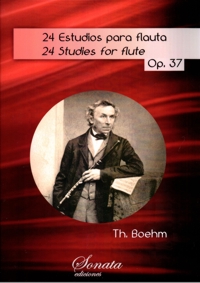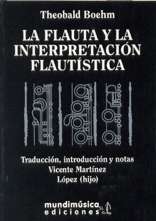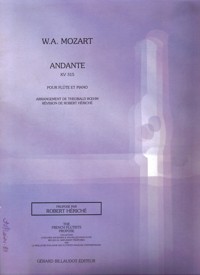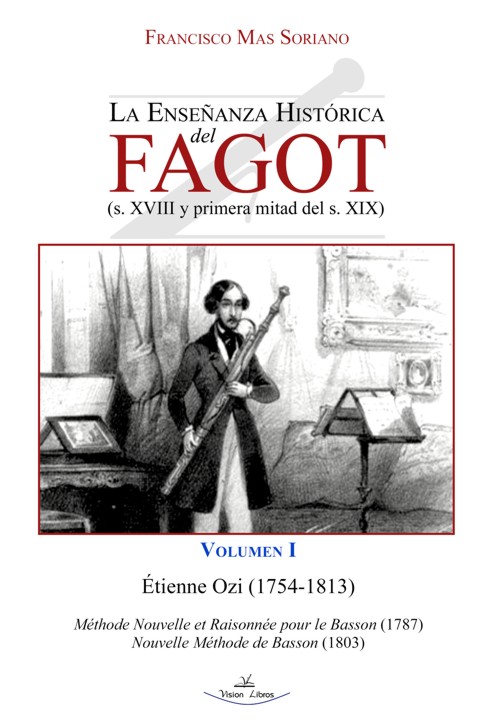
The Flute and Flute-Playing in Acoustical, Technical, and Artistic Aspects
Boehm, Theobald
Dover Publications. 1964Ficha técnica
- EAN: 9780486212593
- ISBN: 978-0-486-21259-3
- Editorial: Dover Publications
- Fecha de edición: 1964
- Encuadernación: Rústica
- Dimensiones: 13,5x20
- Idioma: Inglés
- Traductor: Dayton C. Miller
- Nº páginas: 197
Bajo pedido
Sin stock. Si se pide hoy, se estima recibir en la librería el 29/04/24PVP. 20,60€
Añadir a la Lista de deseos
The flute (or closely related instruments) has been known since prehistoric times, but up until the middle of the 19th century it was still far from being a satisfactory instrument, despite the quantity of important music that had been written for it. Its tone was poor and thin, its volume was low, its keying system was inefficient, and it was very difficult to play.
The man who changed all this and invented the modem flute was Theobald Boehm (1794~1881), a Bavarian flute virtuoso, who played at the royal court in Munich.
Boehm worked upon the flute for many years; indeed, he even went to the length of studying acoustics at the University of Munich, in order to apply the exact data and principles of the sciences to instrument design. After many years of experimentation and preliminary steps, he created the modem flute in 1847. It was silver; cylindrical; furnished with a parabolic head-joint, accurately placed finger holes and efficient key mechanism. With only small modifications this is the flute that is used today.
In 1871 Boehm published an account of his research and accomplishments, a book which has come to be recognized as one of the classics of musicology. In it he covered the acoustics of the instrument; the technique for establishing its proportions and keying; his new system of fingering; the key mechanism; the bass flute in G and similar topics. In the second half of the volume he provided insights on performance, as they emerged from his remarkable virtuosity. This is not a treatise an how to play the flute, but comments upon the development of tone, finger exercises, practicing method, and interpretation, including coloratura. This book is very clearly written and requires no technical knowledge of its reader. It has long been a favourite not only of flutists, but of musicologists, acousticians, and lay persons interested in music.
The present edition of Boehm's work, translated by Dayton C. Miller of the Case School of Applied Science, also contains biographical notes about Boehm, a list of Boehm's musical compositions, a short bibliography, and a critical introduction. More than 50 musical excerpts and illustrations accompany the text, while the renowned contemporary flutist Samuel Baron has written a new introduction for this Dover edition.
CONTENIDO:
Translator's Introduction
Part I. The Flute
I. Introduction
II. The Accoustical Proportions of the Flute
III. Explanation of the Schema
IV. The Material
V. The System of Fingering
a) General Description
b) The G# Key
VI. Tables of Fingering
VII. Description of the Key Mechanism
VIII. Care of the Mechanism
a) Repairs
b) The Keys
c) The Key Pads
d) The Springs
e) The Cork in the Head Joint
IX. Treatment of the Flute in General
X. On the Blowing of New Flutes
XI. The Embouchure
XII.The Bass Flute in G
a) Its Musical Characteristics
b) Dimensions of the Bass Flute
c) Mechanism of the Bass Flute
d) Special Fingerings for the Bass Flute
Part II. Flute Playing
XIII. The Devolpment of Tone
XIV. Finger Exercises
XV. The Method of Practicing
XVI. Musical Interpretation
XVII. Conclusion
Appendix
a) Biographical Notes
b) Price List of Flutes
c) List of Boehm's Musical Compositions
d) Short List of Books on The Flute
Index









